Partisan Effects on Response to Covid-19
Leadership matters (as does sources of news).
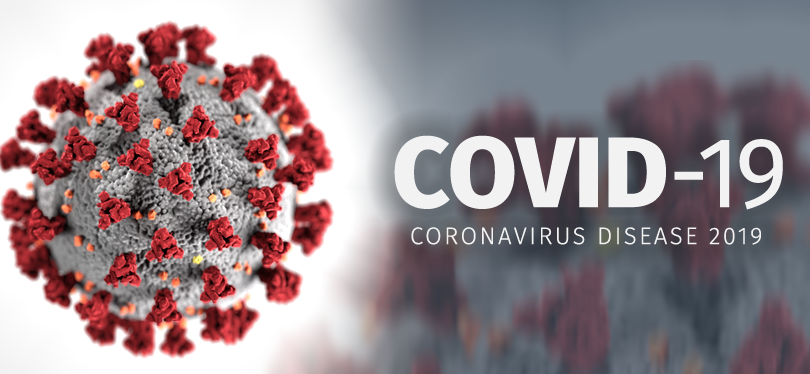
A little less than a month ago, James Joyner wrote a post (Coronavirus Has Been Politicized to Dangerous Effect) that noted that a survey that seemed to indicate partisan differences in the response to the pandemic (specifically in regards to personal hygiene). The basic thesis was that it appeared that self-identified Democrats were responding with more seriousness that Republicans and that this was due to a combination of media diet and how leaders from the two parties were responding. This led to some heated discussion in the comments section.
I am not going to pretend to be able to comprehensively address the question of partisan effects on behavior in a simple blog post, but I will note that there is a substantial amount of evidence that indicates that, yes, partisanship has clearly been an important factor in the response to this pandemic.
For example, it appears to be the case that many Republican politicians (especially governors) have been less willing to engage in measures that would slow the spread of the virus–and this seemed to be especially true during the period that President Trump was either downplaying the disease or making promises about reopening the economy quickly (a simple example would be Texas Lt. Gov. Patrick’s weird declarations about sacrificing the elderly just over a week ago).
My own governor, Kay Ivey of Alabama, who has at least closed face-to-face instruction for public schools and has closed non-essential businesses, has resisted going to shelter-in-place. As she stated a week ago today:
Gov. Kay Ivey said Thursday she had no plans to issue a stay at home or shelter-in-place order any time soon.
The governor made a similar statement on a call for reporters on Monday and said she was working in consultation with public health experts “to determine the best course for Alabama.
“Y’all, we are not Louisiana, we are not New York State, we are not California,” she said. “Right now is not the time to order people to shelter in place.”
Source: “Coronavirus: Ivey says ‘right now is not the time’ for Alabama-wide shelter-in-place order” The Montgomery Advertiser
But, of course, WaPo noted the next day with the not especially comforting headline: “Alabama governor won’t issue stay-at-home order because ‘we are not California.’ By population, it’s worse.”
There is also the problem of wanting to avoid being Louisiana or New York and how to accomplish that feat.
The following is still quite stunning:
After resisting a statewide stay-at-home order for days, Georgia Gov. Brian Kemp (R) succumbed to the pressure and issued one on Wednesday. Part of the reason, he said, was that he had just learned some new information.
Kemp said he was “finding out that this virus is now transmitting before people see signs.”
“Those individuals could have been infecting people before they ever felt bad, but we didn’t know that until the last 24 hours,” he said. He added that the state’s top doctor told him that “this is a game-changer.”
Source: “Georgia Gov. Brian Kemp, who resisted strict coronavirus measures, says he just learned it transmits asymptomatically” WaPo
I must confess that I have known about the possibility of asymptomatic transmission for at least 6 weeks (probably longer–time is hard to account for at the moment). It is stunning to me that he was not aware (and yes, I realize he could be lying here–and he could easily have dismissed this fact earlier because it did not fit into his preferences). But I have been hearing daily stories every morning on Morning Edition about this virus since its initial outbreak in Wuhan, as well as about the possibility of asymptomatic transmission the whole time, so it is utterly bizarre to me that Kemp is just now learning this.
We could also talk about the responses of other specific red state governors but will leave it at these two examples (but one could look to Florida and Mississippi for further data points).
News consumption is clearly an issue:
One difference that stands out within party is based on the media diet, particularly on the right. Among 30 news outlets asked about in an earlier survey, Republicans who got political news only from outlets whose audiences lean right politically are more likely than Republicans with other media diets to think the news media have greatly exaggerated the risks associated with the virus and to think COVID-19 was created intentionally in a lab.
Source: “Americans Immersed in COVID-19 News; Most Think Media Are Doing Fairly Well Covering It” Pew Research Center.
The most dramatic piece of evidence that deeply red state reactions have not only been different but dramatically so is this map from the NYT (the scale is hard to read, but the colors measure when average distances traveled decreased and red means it had not descread by March 26) :
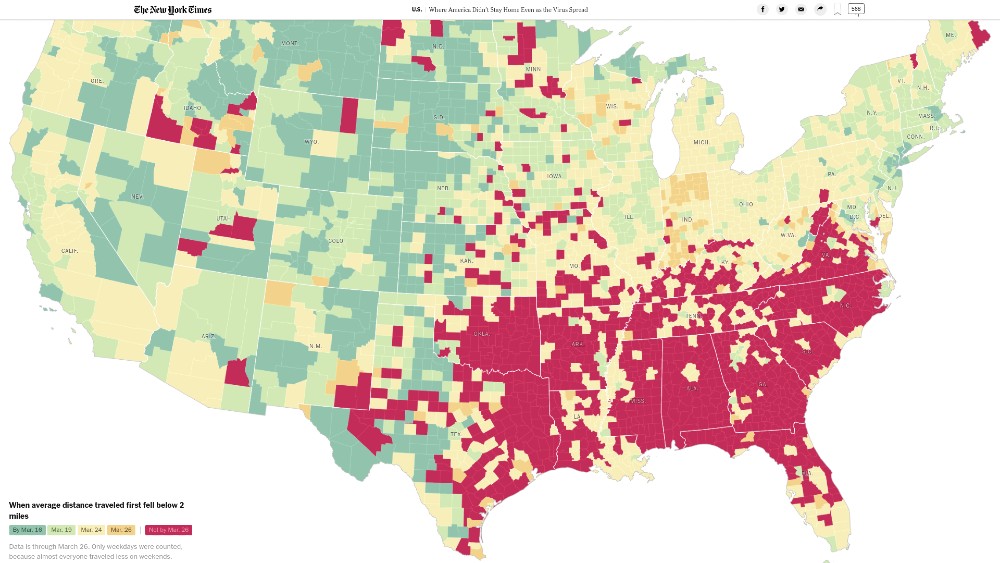
Another key map (the darker the color, the more people are closer to normal travel):
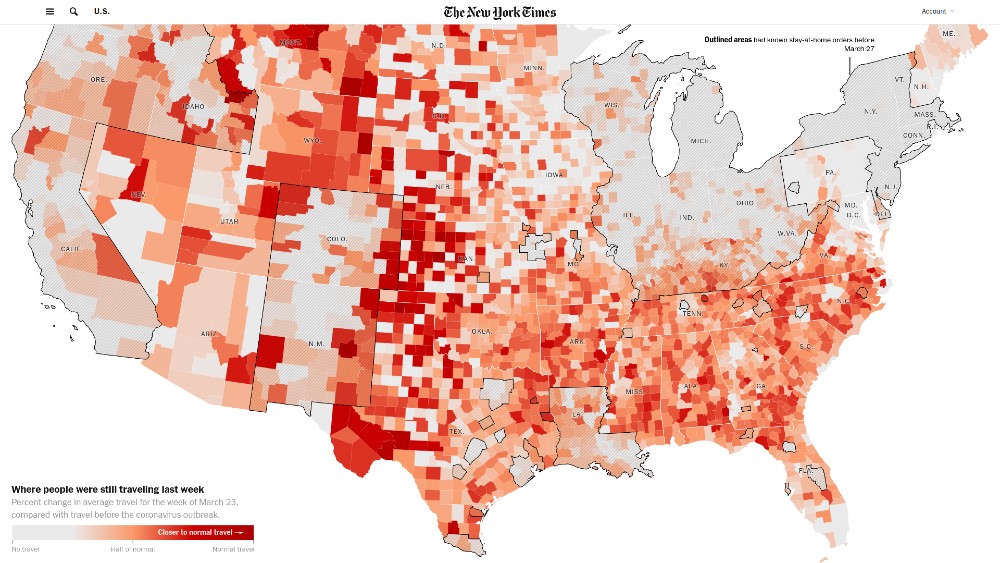
The piece is here (Where America Didn’t Stay Home Even as the Virus Spread). This map honestly worries me, as it shows that in the southeastern United States we have not been taking this situation sufficiently seriously and that the consequences could be dire. I am especially concerned about Florida as they have only just now stopped normal operations (the stay at home order goes into effect today at midnight and still allows for religious gatherings to take place).
Lest anyone still needs convincing about the dangers of gatherings, please see this NYT story: Days After a Funeral in a Georgia Town, Coronavirus ‘Hit Like a Bomb’.
With a population of only 90,000, Dougherty County has registered 24 deaths, far more than any other county in the state, with six more possible coronavirus deaths under investigation, according to Michael L. Fowler, the local coroner. Ninety percent of the people who died were African-American, he said.
The region’s hospitals are overloaded with sick and dying patients, having registered nearly 600 positive cases. Last week, Gov. Brian Kemp dispatched the National Guard to help stage additional intensive care beds and relieve exhausted doctors and nurses.
According to a friend of mine with connections to those events, one family lost three members to the disease.
I could go on, but I think it is clear that, as we discussed a month ago, partisan filters matter and they have consequences at the moment that are of great significance.

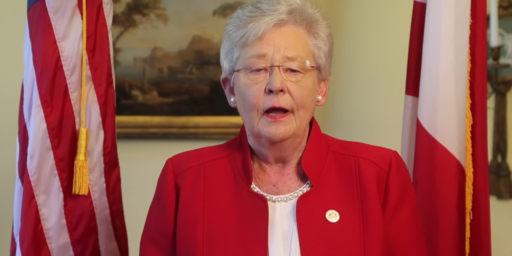

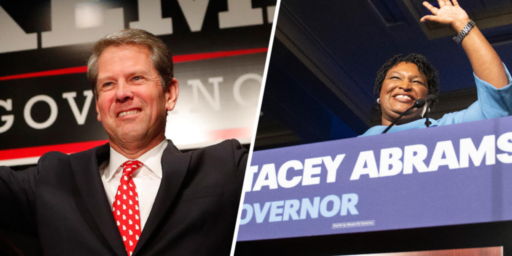
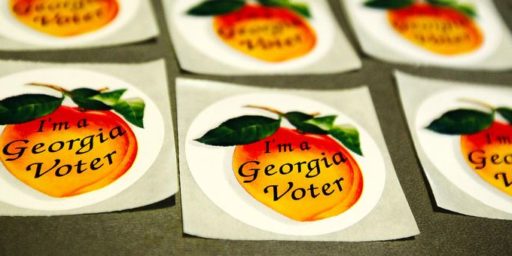
Insofar as Kemp’s ignorance of asymptomatic transmissions is concerned–Trump claims he just recently discovered that people died from the flu.
Then again, Trump’s cloud of unknowing appears to be infinite.
Charlie Baker, a Republican governor, is doing a pretty good job in Mass.
Wait…what? Facts, and science, are now a partisan filter?
Look…this pandemic is really no different, in this aspect, than climate change.
Republicans are the only group on the planet that refuses to accept what science tells them. That isn’t a partisan filter, it’s a psychological defect.
Republicans reject reality. They have no choice, really, reality leans Left.
Kemp’s feigned ignorance of asymptomatic transmission is not simply a failure to listen to NPR. I presume that even Georgia has a public health infrastructure with actual professionals paying actual attention to actual health news. I cannot imagine that those professionals neglected to tell Kemp about asymptomatic transmission. He was either unwilling to believe his own public health officials or needed some BS excuse for finally exercising some prudence.
I’m amazed that the viral bomb has not exploded yet in the large retirement communities like The Villages, or the cities with big populations of seniors, like Naples.
@Daryl and his brother Darryl: Childish partisan filter screening out….
This is serious, and this story is about how right-wing media and the right-wing partisan filter has deeply misinformed people. I saw the first map before, but the second one explains part of the first that I was surprised by. It seems people in WY haven’t changed, they just don’t drive that much.
And at the same time, I am here because I am aware that there is a partisan filter that would love to operate on me, and tell me other comforting lies in exchange for my eyeballs. It’s very different, but it does exist.
We have long since left the era where CBS News and Walter Cronkite could just assume they had an audience and try to inform them as best they could (even if that was subject to their own set of assumptions and filters). No, media has to compete for our attention, and that competition has not been particularly good for the veracity and relevance of said media. And this is true in many corners.
The “good” ones are the ones that don’t pass on counterfactuals, but only engage in heavy editing of what they tell you about.
Well, it’s where do you get your news from.
And Jonathan Last saves particular venom for Rush.
What’s really
unfortunatestupid is, if you’re concerned about the economic recovery the only rational policy is the one that contains the epidemic as quickly as possible. These Rethug governors, who profess so strongly that they want to minimize the hit their economy takes are pursuing policies that will prolong, not only damage the the local economy, but the national economy as well. Idiots.This is partisan int he US, but there are similar patterns elsewhere. Namely Mexico.
While his majesty Manuel Andres I did not downplay the threat, the authorities seemed unconcerned. They talked about phases. Phase I is when the virus is coming in from abroad. They did issue warnings, recommendations to wash one’s hands often, keeping distance, seeking medical treatment, watching out for symptoms, etc. But that was all.
Phase II was contagion of people coming into contact with those from Phase I. This would have been the time to deploy aggressive and extensive testing, tracing, and isolation. This was not done to the degree necessary (we remain vastly under-tested, I’m sure), as happened in South Korea.
Now that we’ve hit Phase II, where you can catch the virus from anyone, now they get serious and order closures of non-essential activities. But still they allow a great deal of activity. For instance, itinerant markets have not been even asked to close. These are large clusters fo temporary stands that move around from place to place on a daily basis (one sets up near our office on Tuesdays). They are very crowded. I understand they have to make a living, but the risk is sky high.
It may have helped that people took matters seriously before the authorities did. I haven’t left home except for work and one trip to the supermarket each week, since late February, for example. Still, I had to go to the bank once for work matters, and I’ll have to go again tomorrow or next week. I had to go deliver samples on march 3rd and then again on the 23rd.
Banks won’t allow more than ten people in at a time, they do keep people apart from each other, and they have hand sanitizer. But it’s a risk.
It’s like there’s a widespread attitude that we won’t take serious preventive measures, until corpses pile up and hospitals ar overwhelmed.
Also, lots of younger people still buy the notion that they’re at very low risk.
Steve Schmidt, former Republican, on GA Gov. Kemp;
Again…this is not about filters. It’s about defective brains.
@Joe:
The headquarters for the entire CDC is in Atlanta!
As I’ve mentioned in the past in other contexts, one of our problems is that irrational behavior is an economic good, and like any other economic good, when the price goes down people consume more of it.
For the last three years, the cost of irrational behavior has been at an all time low.
It suddenly just got much more expensive.
Florida Gov DeSantis finally issued a stay-at-home order for the state yesterday. It was kind of half… hearted. And I find within hours he very quietly issued a second order overriding any tighter local restrictions. In particular you may remember that the sheriff had a Tampa megachurch pastor arrested and filed misdemeanor unlawful assembly charges against him for holding services last Sunday. DeSantis declared attending church essential, along with buying guns and ammo. Now no one’s sure what the rules are on churches.
As I mentioned elsewhere, this is the same Gov. Kemp who appointed Kelly Loeffler to the Senate, and it only took her two months to use her new position to enrich herself thru Insider Trading.
Partisan filter…indeed…
Blue states are going to lose people due to population density. Red states are going to lose people due to stupidity and contrarian stubbornness.
I’ve said it before and I’ll say it again- when this thing starts hitting rural and red counties, it’s gonna be bad. The South in particular is going to get a nasty wake-up call in the next week. NYC is the epicenter because that’s where 8.7 million people are jammed in tight yet the death count is about 800 at this time. It was always going to be a mess. When we start seeing 800 deaths in smaller cities of 500,000 or less because they listened to idiot Republicans, it’s going to cause problems. They won’t be able to pretend it’s a liberal problem anymore or that dirty cities (and their inhabitants) will suffer while beautiful, wide-open nature keeps them safe.
Quite simply, someone in NYC will spend weeks in lockdown but not likely personally know someone who dies of COVID-19. Someone in rural Georgia will continue on with their lives and suddenly start losing loved ones left and right. Blue staters will remember this as a time of willing restriction and deprivation that kept them alive. Red staters will remember this as when their careless choice of I-Do-What-I-Want over common sense cost them their family and friends.
While some of the differences in the map are definitely policy based, some may simply be geographically based (especially when you read the maps together). As Olivia Paschal pointed out on twitter, some of the first map can in part be attributed to the fact that people have to travel further distances in many parts of the south to reach basic services including restocking on supplies and medical facilities. See here: https://threadreaderapp.com/thread/1245711609890320386.html
That doesn’t mean that policy doesn’t play a role or there are high risks to having to do this. But I’m not convinced the story is as simple as all those counties are too deep within the right wing media bubble to be doing whats safe.
@KM:
Only if they are educable.
Assumed fact not in evidence.
@KM:
If only that were true, but the time when “at last they will see the error of their ways” never seems to come.
@mattbernius: To be fair, I should have noted that there are multiple variables at work here. But I still think when we look at the southeast in particular, that politics and media diet have to be very important variables to explain the outcomes.
Putting what I said here in a slightly different way @mattbernius, I’m not sure milage is the best indicator of behavioral change. There’s a key chart in the middle of the article that shows that most counties reduced relative distances of travel:
Agreed, still higher, but it would be useful to understand how much of that has to do with external factors. It’s super easy for me to reduce to under two miles because within less than two miles from my home I have both a major supermarket and drug store (and if necessary an abundance of other stores that I can easily restock). I could easily be using all of them and still be able to fall on the significantly lowered travel side of the equation.
So again, policy matters — see DeSantis and Kemp — but I also think that people are changing their behaviors (its just that is sometime limited by the possible). Which gets to one other aspect, I’d love to see those charts take account for major industries within given counties and see how many fall into “essential” categories.
@Steven L. Taylor:
It seems to me that “…politics and media diet have to be very important variables to explain the outcomes.” is an overly polite way to say lies (rather than scientific evidence and findings of fact).
We are discovering that there really are limitations to gaslighting. There comes a point when the cold, hard realities of the day can’t be spun away with some attractive fictions.
@Steven L. Taylor:
Agreed that they need to be heavily weighted. As does culture in general.
But its worth noting that a lot of those redder counties also can be also mapped onto the “black belt” (https://en.wikipedia.org/wiki/Black_Belt_in_the_American_South) and while some of that population skews more conservative than a lot of folks want to acknowledge, they’re not exactly your average Fox News crowd (one of the two funerals you mentioned happened at an chapel that almost exclusively served the local African American community).
Hating to be “that guy” 😉 , but anyone want to speculate on what role the OTHER 10% played in breaking this event out of the RWNJ media bubble?
As an example of contact tracing in Mexico:
About two and a half weeks ago, a coworker found out a census worker who visited her apartment was determined to have been infected. She was told to stay home until she could be tested (no clue, BTW, how she obtained a test). The test came back negative.
Fair enough. But as far as I know, no one else at work or in her family were tested. I found out because she told me. I don’t know who else was told.
Shouldn’t everyone she came in contact with have been informed and tested? Suppose her test had been positive, whom else might she have passed it to.
BTW, she’s been wearing a home-made surgical mask since.
The Coronavirus’s Unique Threat to the South
@mattbernius:
People have to travel just as far for those things in rural Michigan, but look at it on the maps.
2019 was worst year for US rural hospital closures in a decade, report finds
State-by-state breakdown of 120 rural hospital closures
One of these is not like the others:
Alabama- 6
California- 4
Georgia- 7
Kansas- 5
Kentucky- 4
Mississippi- 5
Missouri- 6
North Carolina- 7
Oklahoma- 8
South Carolina- 4
Tennessee- 13
Texas- 20
The cost of these closures has just gotten a lot steeper.
It’s farther than 2 miles to our grocery store here in rural-ish NH, but given the fact that I’ve reduced trips to once every 2+ weeks, the average holds.
The article in The Atlantic that shows demonstrably worse health outcomes for covid-19 cases in the south was not surprising. I’m distressed but not remotely surprised that there’s a partisan split in believing reality.
@Mikey:
yeah, honestly the total lack of travel in both rural MI and NY I find surprising. I would have expected both too look a little closer to WI’s interior.
Granted the difference could be due to a more extreme shutdown (getting back to policy). WI is listed as shutdown but the devil is in enforcement (some of that could be the later effective date in WI). Or there could be an issue with the data set.
Also Steven, I forgot to note that the article you currently made the point about the disproportionate effect on the local AA community.
I can’t believe I’m saying this. I’ll blame it on the wine and whisky, and being under Washington states shelter at home policy. I haven’t left my home for weeks, except to stock up on more wine and whiskey.
My deranged thought. Why haven’t the Red States claimed that the KKK invented personal protection equipment years ago?
@mattbernius:
Agreed. But I think that the fact that the governor of Georgia, as well as a lot of GA state leaders, are influences by FNC and by Trump, helps sets the general tone for the whole state.
@mattbernius:
You have a point in places like NYC. But look at SoCal. Having lived there, I guarantee that people travel a lot of miles in a normal day in LA and Orange County. Definitely more than 2 miles.
@mattbernius: The maps show the change in distance travelled. If someone in NY travels 1 mile to the store and someone else in Arkansas travels 20 miles to the store, both can achieve the same percentage reduction by going once a week instead of twice. Plus sparsely populated states in the west have managed to reduce their travel.
@Kingdaddy: I’m not. What these charts and graphs are based off is policy positions and other adjacent factors that dont directly measure actual social distancing. Alot of old people in Florida are not coming outside and the ones that do are wearing masks and gloves inside stores.
There is a difference in being informed from someone writing about something and being on the street. Despite limited test capacity, 90% of the tests statewide are coming back negative. Maybe the heat and social distancing is actually working here, if the 90% negative holds or improves we’ll know we’re in good place. If we dip towards 80 or lower…that’s reason to worry.
@Scott F.:
Really? Look at all thos dirt poor Southerners who still believe that unions are the work of the devil…
@JDM:..Why haven’t the Red States claimed that the KKK invented personal protection equipment years ago?
From one sic fuk to another…
Woody Allen Down South
@Kingdaddy:
Collier County & Naples FL
Collier County has tested 1593, 11% have been positive. Naples City has 145 positives. 22 are hospitalized. 2 deaths.
Data on April 2 2020.
@CSK: Insofar as Kemp’s ignorance of asymptomatic transmissions is concerned–Trump claims he just recently discovered that people died from the flu.
How odd tht this virus can be transmitted by asymptomatic people, just like measles, seasonal flu, and the common cold.
As for trump not knowing tht people died of the flu, my understanding is tht his own grandfather died of it.
Last week, people who routinely comment here expressly wished that Rand Paul would die.
Was there ever an official from the owners of this space response laying out acceptetable commentary and consequences?
There was majorly bad behavior. Do not want to associate with that garbage. At all.
I bailed hard. If there were pronouncements, adjustments, consequences, could someone give me a brief update?
I am evaluating whether this joint is worth my time.
@de stijl:
Apart from what I said in that thread (which was copious and direct, I would note)? No.
@Steven L. Taylor:
Not just the tone, but the literal policy. There’s no doubt that state mandated lock downs are critical and that’s a point where you’ll get no argument from me that politics are playing an outsized role.
I’m just wary of too much projection downward into the population. But I may be overly sensitive on this topic.
I can’t speak to SoCal. I was more thinking Central and Western NY and other rural areas (where I have more experience in). Once you get outside of the “cities/towns” (both large and smaller like Amsterdam or Herkimer) travel to things like supermarkets is usually 15 to 20 minutes at least.
@Daniel Hill:
Only the second heat map shows relative reductions. The first map (the red/green one) with the strongest red clusters is only looking at when average travel fell below 2 miles.
In the second heat map, with the exception of rural NY, MI, and PA (I’m guessing due to earlier lockdowns), most rural areas show similar heat map values.
BTW, I think this different view into the same data set is worth looking at as well:
https://www.nytimes.com/interactive/2020/04/03/us/coronavirus-stay-home-rich-poor.html
@mattbernius:
I am going to admit that I totally missed your point/was thinking about it incorrectly yesterday.
What I would say, having thought about it a bit is that if the issue was simply one about rural distances then the deep red should correlate more across the country than it does (and there should be a bit more variation in the southeast. Montgomery County in Alabama shouldn’t be as red as it is, for example (the only yellow areas in the state are the Birmingham, Mobile, and Huntsville).
@mattbernius: And an excellent point about the rich/poor divide in this present moment.
@mattbernius: I suppose what strikes me in looking at the map about distance traveled is that I wonder about why the profile in places like the Dakotas and New Mexico, just to pick a couple of cases as they both have a decent amount of poverty and large spaces to traverse, don’t look more like the SE or vice versa (granted the Dakotas have low pops, and NM is only about 2 million, IIRC).
As I noted in the OP, there is no way for a blog post to really address this comprehensively, but there are some important studies to be done about the way in which political leadership and media narratives influenced policy and the mortality outcomes.
@Steven L. Taylor:
Agreed on all points. I suspect that I’m coming across as far more opposed to your premise than I actually am. Without a doubt I do agree that political leadership and media do play into policies.
Cool will definitely look into those as media is one of those topics I’m deeply interested in. I just don’t know the Pol Sci lit enough (I’ve seen stuff in the Mass Comm lit about that).
Yeah, I agree about that point as well. There’s a lot in those visualizations/datasets that I’d love to understand — in particular, my gut says the utter lack of travel in central NY and MI really feels off to me (but again that could come down to the local orders being really well enforced). I’d expect to see something closer to what PA or WI looks like in both.
Thanks to my work at MFJ, every time I see that big a hole in a data mapping, I’ve started to question how the models/thresholds have been tuned. I know that can really change a lot of things.
@Steven L. Taylor:
I’m all for a decent give-and-take, but when folks openly wish that politician should die; that is a bad scene.
People self police fairly well in general here.
It is entirely okay in your role to say the eliminationist comments are unacceptable and will be scrubbed.
Rod Dreher had a white power problem in his comments for years that he never addressed. I politely, but directly pointed out this problem, and my comment was scrubbed.
It is in your best interest to clearly establish what is unacceptable.
Sorry if that sounds like over-reaching and meta, but it’s my honest take.
@de stijl: I feel like I made my position clear in that thread and the issue has not been a recurring one. Had it been, we would have dealt with it.
Thanks for your concern.
@Steven L. Taylor:
Thanks for your response.
When I put my mind to it I can passive – aggressive like a beast.
Taylor just schooled me.